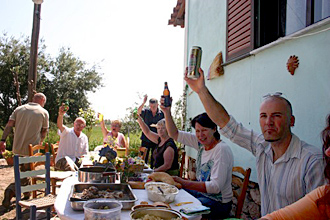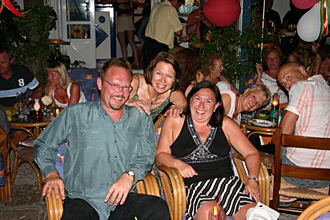

As a lot of Judith Gould readers already suspect, I’ve been flirting with a love-affair with Greece—and almost bought a home there. After over a decade of spending months in the Greek islands, they’ve become a kind of second home for me. It’s easy to pick up the International Herald Tribune with the Kathirmerini section devoted to Athens, Greece, and the surrounding European Union news articles and to pick up stories from the New York Times as well as “local” Greek news. And back in the States here, the news has been filled with the repatriation of antiquities from museums all over the country (from the Getty in Malibu to the Metropolitan Museum of Art in New York City), primarily concentrating on Greece and Italy.
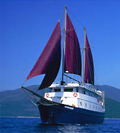
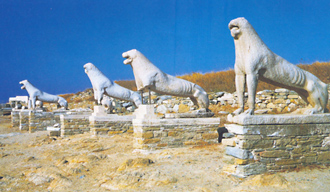
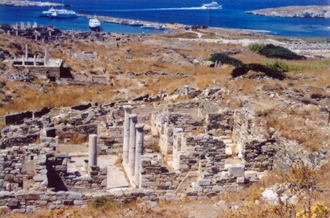
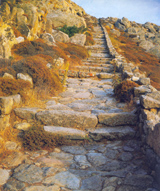
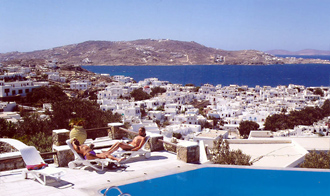
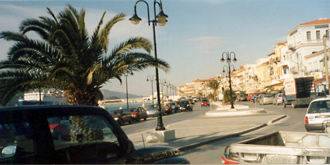
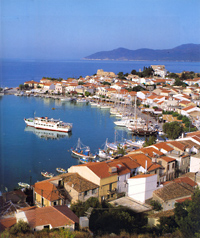
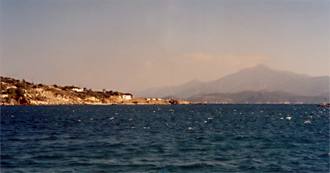
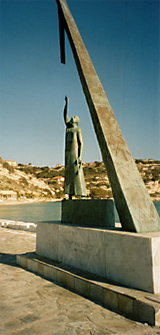

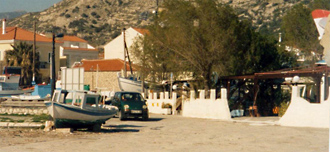
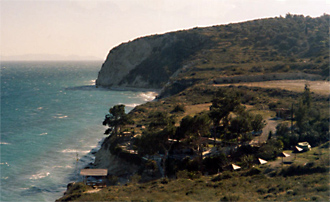
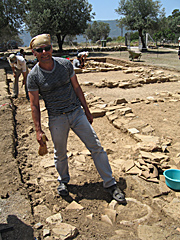
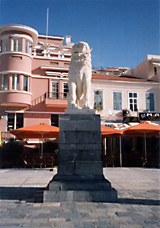
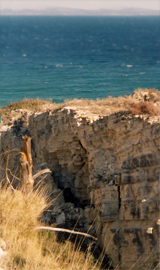
What isn’t of so much news here (what with Iraq, Afghanistan, Pakistan, and the current financial crisis going on) is the European Union’s concern over illegal immigrant smuggling—refugees from Iraq, Iran, Pakistan, Afghanistan, and other such troubled nations. The United States news media is much more concerned with a missing tourist in Aruba or some such place—while in the European news media you learn that the smuggling of immigrants across international borders is of major concern. How many of you out there even know about all the detention centers in the E.U. for illegal immigrants?
Of course, as a novelist, this problem immediately jumped to the forefront of my fictional “head.” So did the case of ex-Getty Museum curator Marianne True, who bought a house on Paros, the very island (one down from Mykonos), where I decided I wanted to put down roots. I might want to mention that friends highly placed in the international art world believe Ms. True to be a scapegoat for her former bosses. Whether or not this is true—no pun intended—or not, I really cannot say.
What I will say, however, is that the smuggling of antiquities from their countries of origin—not to mention the smuggling of “human cargo” into the European Union from other nations—definitely perked up the ears of Yours Truly.
And thus the germination began: the novel which would become Greek Winds of Fury.
(I’d originally named it Meltemi, after the Aegean wind which sweeps down from the north and is also the name of a small cruise ship in the novel.) Everyone from my agent, to my U.S. publisher, and even my Greek publisher convinced me that Meltemi was a bad title. That “Winds” in the title would be better. So I bowed to multitudinous pressure. Thus Greek Winds of Fury it is.
(In my heart, however, it shall always remain Meltemi, and I still call it that in private.)
Needless to say, Greek Winds of Fury is one of my favorite novels...especially since it takes place in the Aegean, the sea I love the most and of which, to quote George Noel Gordon, better known as the poet, Lord Byron, waxed poetic. To quote from two of his famous poems:
The isles of Greece, the isles of Greece!
Where burning Sappho loved and sung
Eternal summer gilds them yet,
But all, except their sun, is set.
Place me on Sumium’s marble steep,
Where nothing save the waves and I
May hear our mutual murmurs sweep;
There, swan-like, let me sing and die.
A land of slaves shall ne’er be mine -
Dash down yon cup of Samian wine!
Well, believe it or not, I first encountered Sumium (or as it’s now popularly known, Sounion, when I was 16 years of age) and instantly fell in love with Greece, and have loved it Byronically ever since. Poseidon’s temple on that promontory, a beacon for sailors for some 2,500 years or so, enchanted me forever. Oh, it’s not the same as back in 1968 (when the CIA-backed “Colonels” and their “junta” ruled Greece), but it was a time when you could hop, skip and jump among the columns of Sounion—as well as the Parthenon in Athens—which is a total no-no now.
Greece has, since back then, come thoroughly into the 21st Century, and has begun a major preservation effort—perhaps too much so in my opinion. There is such a thing as too much restoration—especially on the Parthenon. (A note here to a reader who wrote me—after reading The Greek Villa-that she prefers the novels of Mary Stewart, which she thinks capture Greece more accurately than “Ms. Gould.” I love Mary Stewart’s novels, and grew up on them. But the Greece of today is very, very different from the Greece of the 1950s).
At any rate, one-half of the writing team of “Judith Gould” (see Nick’s Story, in The Story of Judith Gould), fell in love with Lindhos, Rhodes way back in 1968 and especially Sounion ...without having read a word of Byron’s. And I’ve been in love with Greece ever since. The birthplace of democracy...the birthplace of the Olympic Games...the Ancients who gifted us with Sophocles and Aristotle and Hippocrates and Pythagoras...not to mention the culture that thrived so long, long ago...who could resist? Certainly not Yours Truly.
But the gods of the Ancients really do have a will of their own and I swear exert it still. Consider Lord Byron’s immortal words...“Dash down yon cup of Samian wine!”
Well, how was I, of all people, to know that the northern Aegean island of Samos, where that famed wine came from, would figure so spectacularly in Greek Winds of Fury? Truth be told—I had absolutely no inkling. Novels gestate slowly, and slowly the plot of this book fell into place.
Take the character of Chara Zouboulakis, a villainess in the novel. I based her on a beautiful shopkeeper on Mykonos. The real inspiration for Chara was no villainess: in fact, one year on Mykonos, while waiting for a flight to Athens, there she was—with the police. Apparently an American tourist and her sister had lifted some precious jewels from the shop for which she worked. And take the character of another villain—the so-called “Witch of Samos”—who I based on another non-villain, a dear jeweler friend on Mykonos. Mykonos, you have to understand, is chock full of jewelers. Of course I inflated my friend way out of proportions for fictional purposes.
Another adventurous site in Greek Winds of Fury is the tiny island of Delos—one huge, mind-boggling archeological site. How many times have I been there? I can’t begin to count. And yes, like my heroine Miranda Kalli in the novel, I too have climbed Mount Kynthos—but without suffering Miranda’s dramatic “incident.”
My new U.S. publisher bought Greek Winds of Fury in December, 2007. So in January of 2008, the two-person “Gould Team” was off to Greece to visit Samos, an island I’ve never been to, for research purposes. A year earlier, a cruise to Kusadasi, Turkey, aboard a real rust-bucket of a cruise ship that should have been scrapped years earlier, and whose crew painted the metal deck surrounding the pool while we were at sea!, set an important scene for the Turkish portion of the novel. “Ms. Gould” trekked through Kusadasi’s endless bazaar (and its tons of fake Prada shoes, packed in fake Prada boxes, with fake Prada wrapping) and climbed high and low to find just the right spot for the heroine, Miranda Kalli, where she is sent to the fictional character of Dr. Babutcu in the novel.
But on to Samos...
And here I must part company with Lord Byron. His famous line—“Fill high the bowl with Samian wine!” did not exactly hold true. All the Samian wines I was served were not much better than Barefoot or Yellow Tail. The great Samian wines, as I’ve discovered, are coveted by a few great vintners and are not sold to the local restaurants. Also true: I’d booked the tour through Orbitz, but the small hotel where I stayed (and won’t name) slyly avoided the Orbitz commission by claiming their computer wouldn’t work—and I had to run to the ATM to pay the bill. (Take that, my dear reader of The Greek Villa, who mistakenly believed I’d misdiagnosed those wily Greeks!)
Of course, most of the Greeks I’ve met and befriended over the years turned out to be among the warmest, most hospitable jewels on earth. But Greeks, as all people, do have their snakes in the grass. Luckily, except for my fictional villains, I’ve run across very, very few. The crime rate suffered by tourists must be among the lowest in all of Europe.
On Samos, I scouted out the perfect spots in which to set the novel. And while The Albatross restaurant is fictional and based on a real one (I renamed it after one of my favorites on the island of Paros), I discovered (thanks to a brave Greek-Australian taxi driver who, in his silver-gray Mercedes, drove over terrain only a four-wheel drive SUV should have been able to conquer) the perfect spot for my fictional archeological site. It happened to be at Asprodavos, which became the Site at Ancient Asprodavos in the novel.
I am indebted to my archeologist friend, Mr. Arto Penttinen of the Swedish Institute in Athens, for his help discovering mistake after mistake in my manuscript. Plus there’s the “Mykonos Gang,” as I call them, who’ve unknowingly provided tons of inspiration—David Gourgourinis, Sandra Clare, and Ivo Stoykova, not to mention my Greek publisher, Constantine N. Ordolis and his charming sidekick, Marina Kouloumoundra.
And last but not least there’s the “Athens Gang”: Miss Vicky, Panos, Emanuella, and Roula of the Acropolis House Hotel, a small, super-friendly, family-owned hotel practically at the foot of the Acropolis, where I always stay in Athens, who’ve also unknowingly been of enormous help—and shower me with tons of that famous Greek hospitality.
Just remember, dear reader, that Greek Winds of Fury is a work of fiction—a novel of romanic suspense. And while based in fact in many respects, Yours Truly had to take lots and lots of literary license.
I really do hope you enjoy reading it as much as I’ve enjoyed researching and writing it.
All the best, always,
